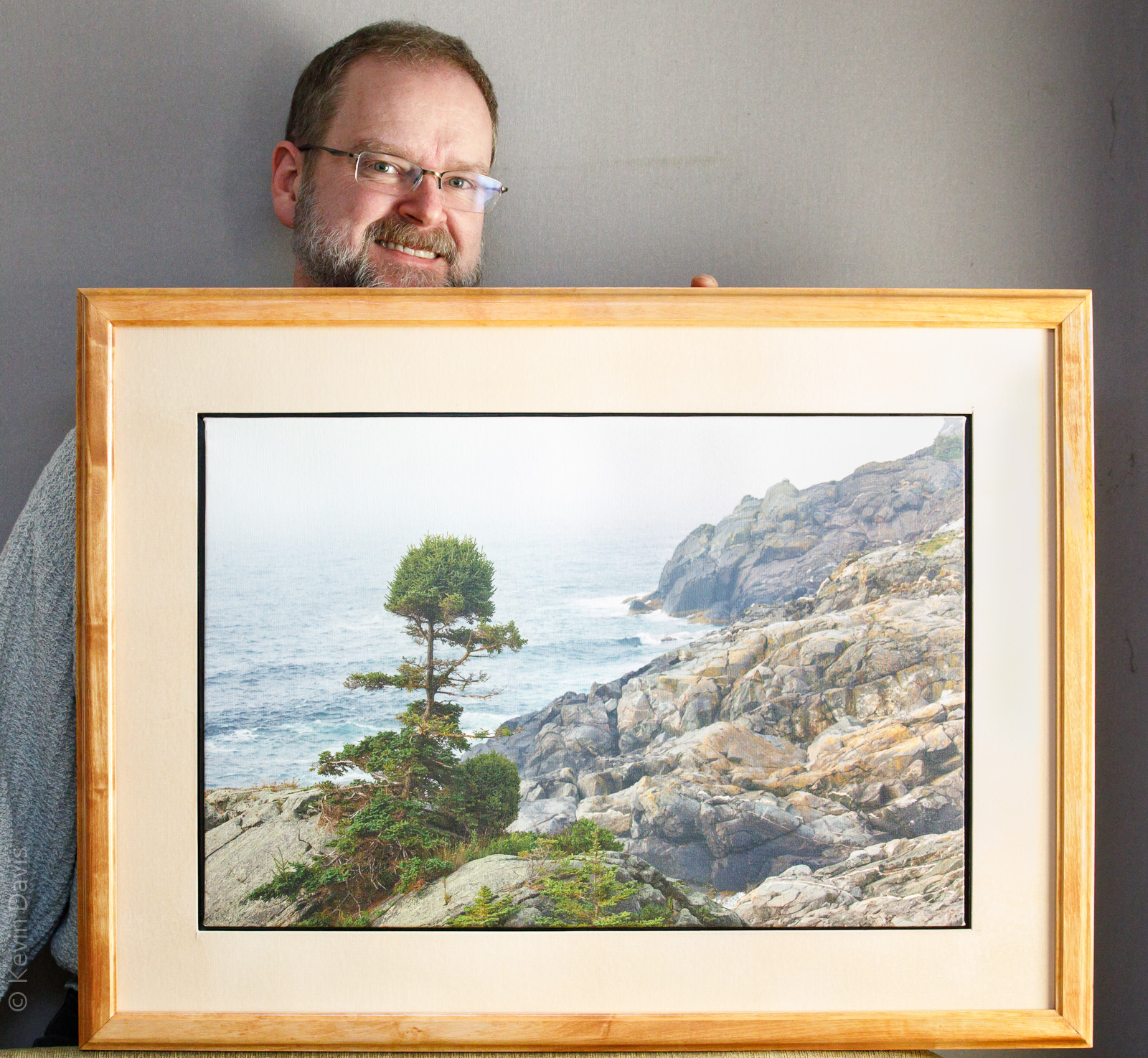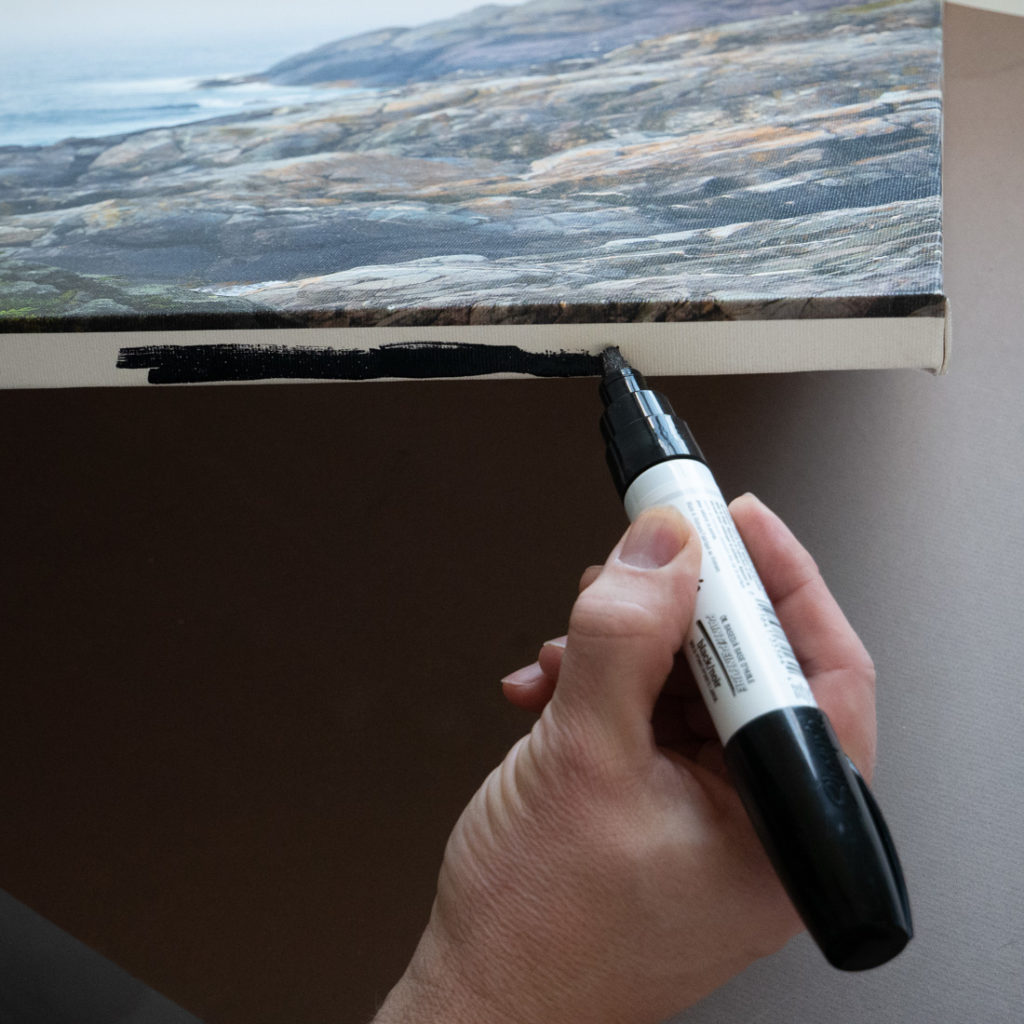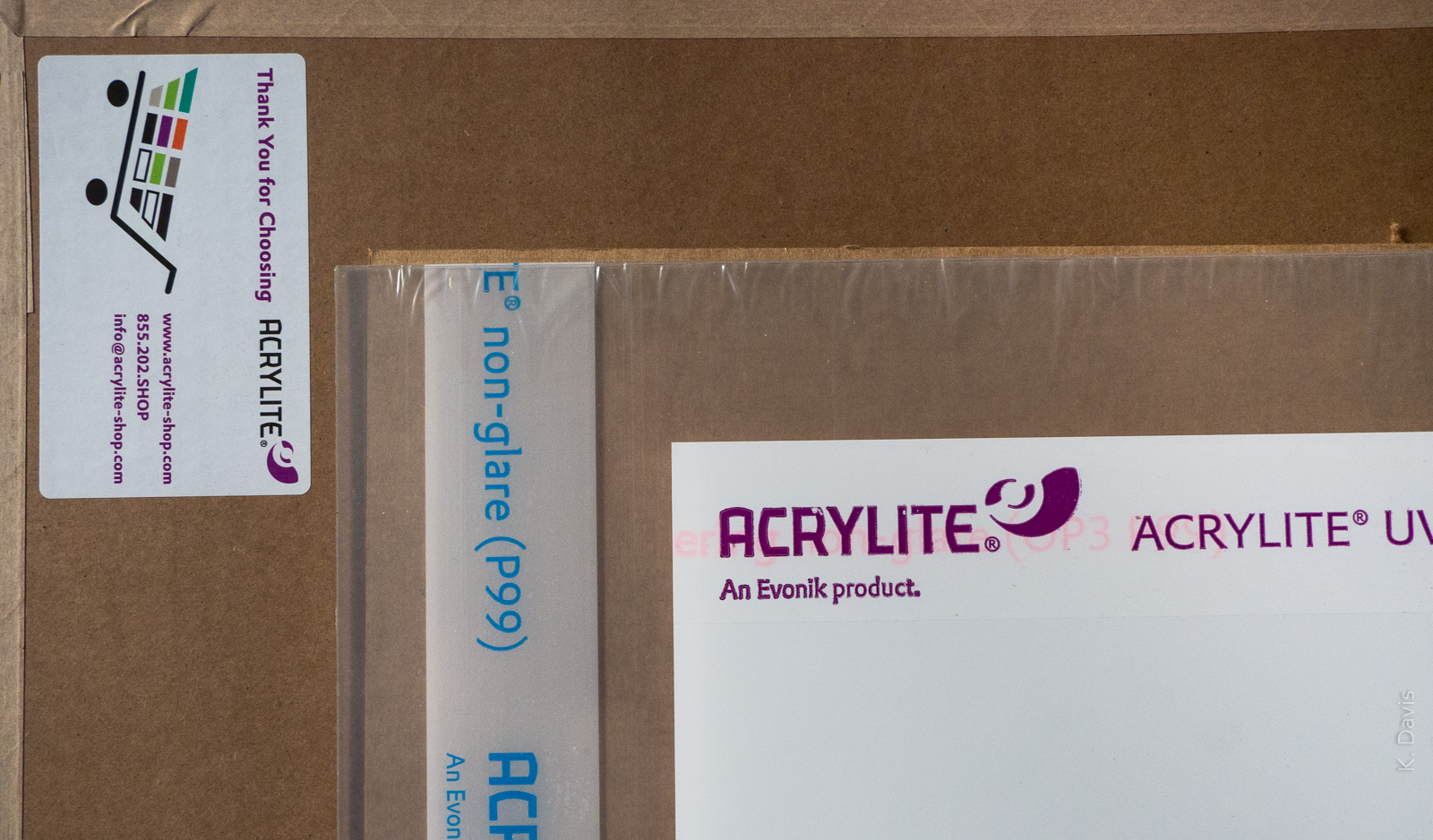
Here’s one of my favorite photographs (from the coast of Maine) printed on canvas and mounted in a custom frame that I designed and constructed. As the print is on canvas rather than paper, there is no glass in front of the print.
As there are many options available for displaying photograph prints, here is a video to share some methods that I have used:
Paper
Traditionally, photographs are printed on paper, either a light-sensitive paper or an inkjet paper. Because such a print is typically not durable, the displayed print is protected behind a sheet of glass or acrylic (a.k.a. plexiglass). Furthermore, the print should not be placed directly against the glass/acrylic and the common separator is matboard, with an opening cut in the middle to show the print. The mat also provides visual space around the print, separating it from the frame; consequently, the outermost frame has larger dimension of height and width.
Note: Alternatively, you can use small spacer (instead of matboard) and the frame is then sized to exactly fit the dimensions of the print.
Here’s a previous blog article about making photo prints on paper.
https://www.kevindavisphoto.com/blog/how-to-print-photographs/
A print on paper is either adhered to a backer board or possibly suspended using an archival hinge. Collectively, the backer board, print, matboard, and glazing (glass or acrylic) are commonly inserted into the frame in one of two ways. If using a sectional aluminum frame, assemble three sides, slide the materials into the frame, and then attach the fourth piece of the frame. Any other frame is typically fully assembled first and the materials then inserted from the back side.
Canvas
The print shown here was printed by by Artistic Photo Canvas (APC). Having experienced their very good service and products, I recommend APC.
Canvas prints are commonly stretched around a wood stretcher frame. The result has a thickness unlike paper prints and that calls for a different type of framing. One common method is called a floating frame. Though this is “L” shaped like a regular picture frame (for paper prints), the foot of the L is behind the print rather than in front. The canvas print is inserted from the front and secured with screws from behind.
The floating frame allows for a gap around the perimeter of the canvas such that the print seems to float within the frame, without touching the frame. Depending upon the width of the gap, the edges of the canvas may be visible. For the particular print shown at the beginning of this article, I darkened the white sides of the canvas using an oil paint pen, shown here in the photo below.

Aluminum
Unlike a print on paper, which needs to be protected behind glazing, a print on aluminum provides a flat print that is inherently durable and does not need to be protected.
Typically, the cost of an aluminum print is 2.5x to 3.5x the cost of an inket print on paper. I checked ten vendors; the cost of a 20×30 aluminum print ranged from $22 to $140. I see no reason why some vendors charged more than $100. Before ordering a print on aluminum, I recommend that you shop around.
Custom Picture Frames
If you’ve ever taken a photo, drawing, or painting to a frame shop, you probably know that framing can be very expensive. I have sometimes invented my own frames; here’s more information:
